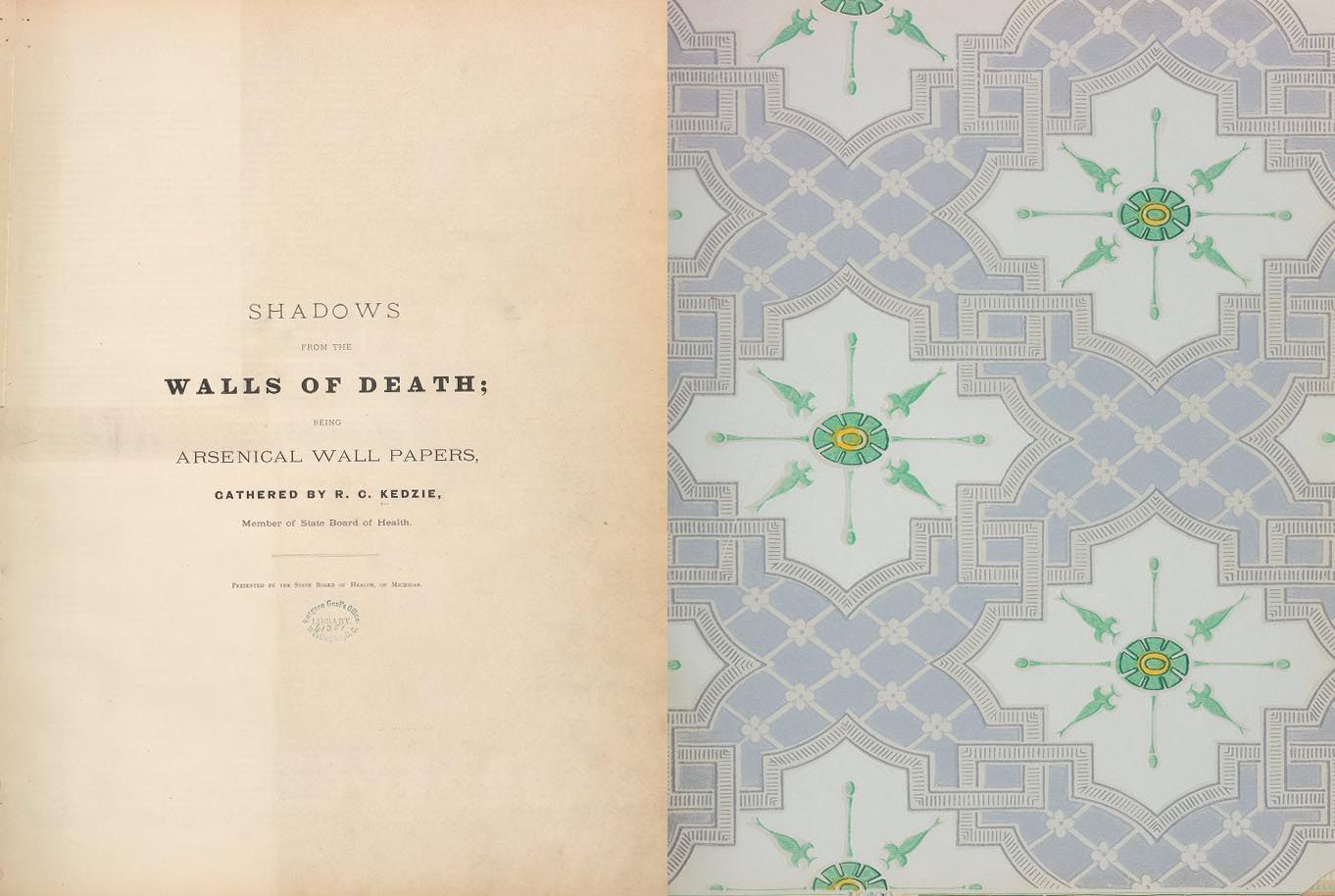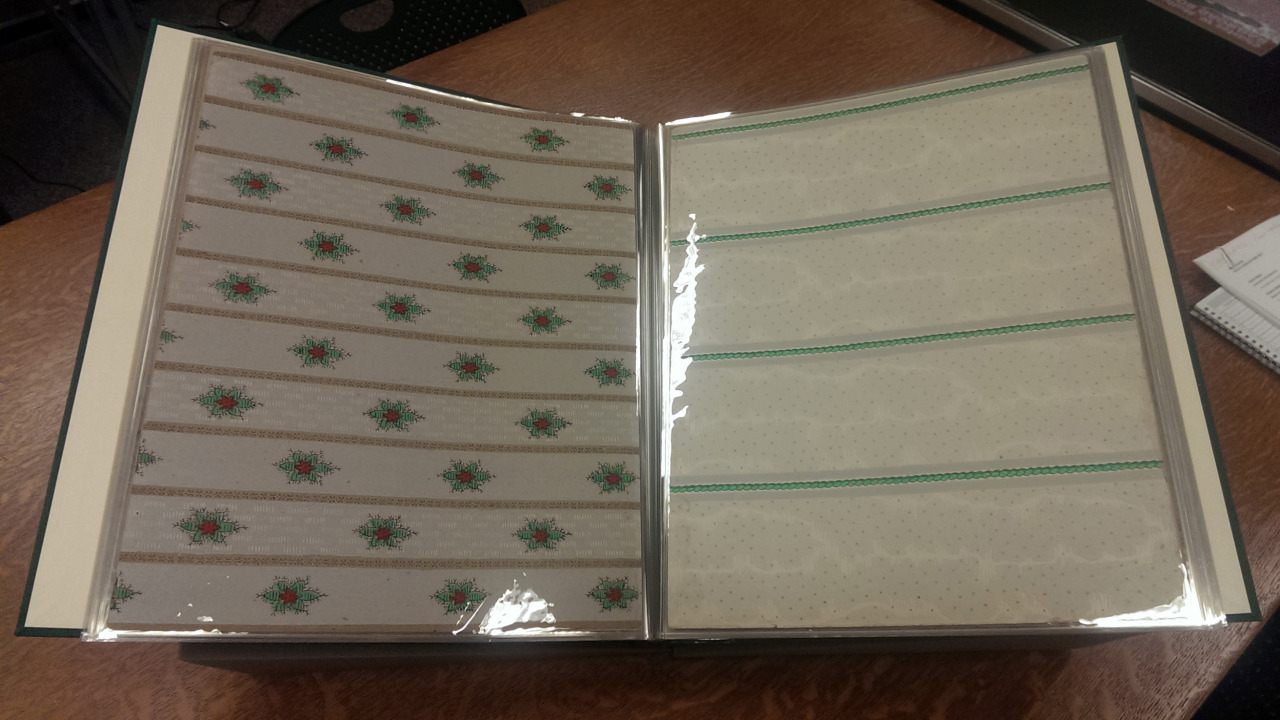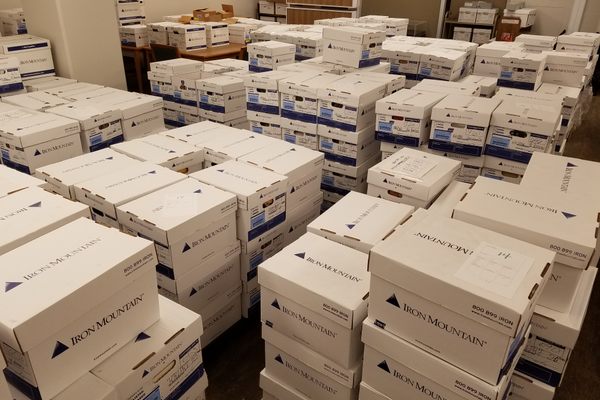How a Library Handles a Rare and Deadly Book of Wallpaper Samples
The arsenic-laden pages of “Shadows from the Walls of Death” should not be touched without gloves.

Shadows from the Walls of Death, printed in 1874 and measuring about 22 by 30 inches, is a noteworthy book for two reasons: its rarity, and the fact that, if you touch it, it might kill you. It contains just under a hundred wallpaper samples, each of which is saturated with potentially dangerous levels of arsenic.
The book is the work of Dr. Robert M. Kedzie, a Union surgeon during the American Civil War and later professor of chemistry at Michigan State Agricultural college (now MSU). When he came to serve on the state’s Board of Health in the 1870s, he set out to raise awareness about the dangers of arsenic-pigmented wallpaper. Though a lethal toxin, arsenic can be mixed with copper and made into beautiful paints and pigments, most commonly Scheele’s Green or Paris Green. This was no fringe phenomenon: near the end of the 19th century, the American Medical Association estimated that as much as 65 percent of all wallpaper in the United States contained arsenic.
The Victorians knew that arsenic was poisonous when eaten, of course—it had gained a reputation as an “inheritance powder” that could be used, for example, to bump off elderly aunts with large fortunes—but most saw little risk in plastering their homes with the stuff. Kedzie argued (correctly, we now know) that arsenical wallpapers shed microscopic dust particles that can be inhaled or ingested. In the preface to Shadows, he warns that arsenic can kill not only by “sudden and violent destruction of life” but by slow, chronic poisoning, a mysterious and lingering illness that might baffle sufferer and physician alike. He wrote of women taking ill and withdrawing into their wallpapered bedrooms to recover, not knowing that all the while they were inhaling “an air loaded with the breath of death.”

As part of his campaign to raise awareness about poison papers, Kedzie produced 100 copies of Shadows and sent them out to public libraries across Michigan. Each one is a slim volume, containing few words—just a title page, a short preface, and a note from the Board of Health explaining the purpose of the book and advising librarians not to let children handle it. The macabre title page reproduces a quote from the Biblical book of Leviticus: “And behold if the plague be in the walls of the house, with hollow streaks, greenish or reddish, then the priest…shall cause the house to be scraped within round about, and they shall pour out the dust that they scrape off without the city into an unclean place.” The remaining pages, 86 in full, consist of wallpaper samples taken from common merchants.
Of the original 100 copies, only four remain. Most libraries, concerned about poisoning their patrons, destroyed their volumes. Two of the surviving books remain in Michigan—one at MSU and the other at the University of Michigan. MSU’s copy rests on an unassuming shelf in the library’s Special Collections division, housed in an appropriately green box. Each page is individually encapsulated in plastic so that researchers and the curious can handle it without fear.
The book was only sealed up in 1998. Before that, says Andrew Lundeen, a staff member at MSU’s Turfgrass Information Center who consults with the library’s Special Collections division, “those wanting to look at the book had to wear special gloves. There were restrictions on how long you could have it out, and you had to be very careful—don’t lick your fingers and turn the page.”

The other two copies of Shadows have made their way to the Harvard University Medical School and the National Library of Medicine, which has digitized the entire volume and made it freely available online. That was no simple task: Dr. Stephen Greenberg, head of the rare books and early manuscripts section of the NLM’s History of Medicine division, says workers had to suit up in protective gear before handling the book.
“It was scanned under laboratory conditions, under a fume hood,” Dr. Greenberg says, referring to the large ventilation chambers used in chemistry labs to suck up hazardous gases. “Picture guys wearing masks and hoods.” The NLM is currently working to encapsulate its volume as MSU has done; previously, it was kept isolated in a sealed container.
The colors of the wallpaper samples have faded somewhat in the century and a half since Dr. Kedzie bound them together, but their hues and patterns remain beguiling. Lundeen says no digital image can do it justice: “It’s worth seeing in person. The light plays off of it beautifully.”
“But,” he adds, “it’s like a poison dart frog. The most beautiful things can be the most dangerous.”




















Follow us on Twitter to get the latest on the world's hidden wonders.
Like us on Facebook to get the latest on the world's hidden wonders.
Follow us on Twitter Like us on Facebook